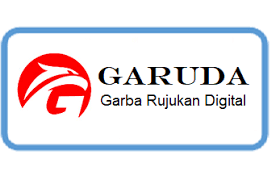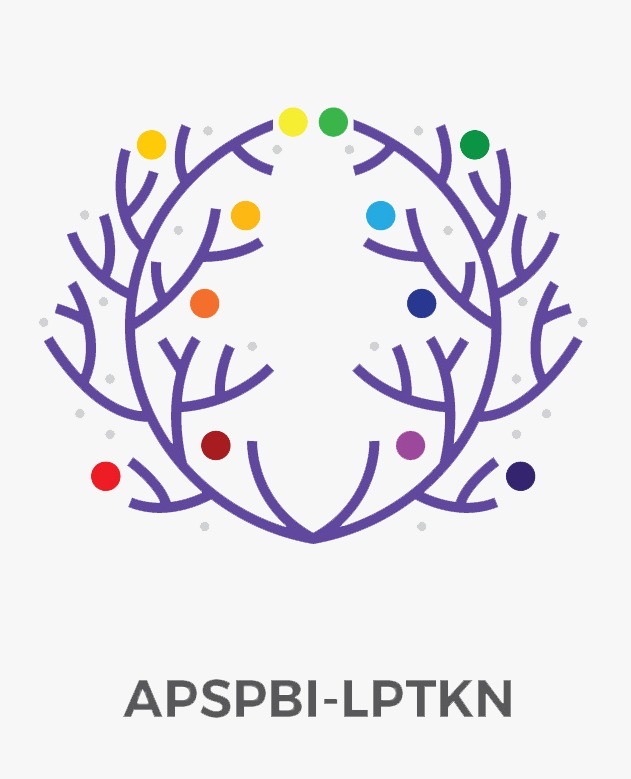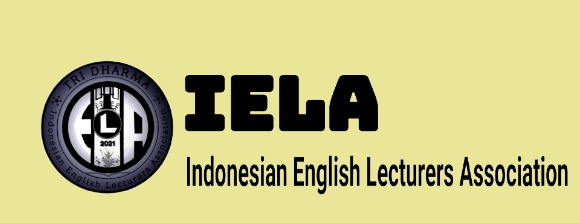CONSTRUCTING ENGLISH VOCABULARY TESTS IN INSTAGRAM FOR 10TH GRADE STUDENTS OF VOCATIONAL HIGH SCHOOL
 ), Hanip Pujiati(2),
), Hanip Pujiati(2),
(1) Universitas Negeri Jakarta
(2) Universitas Negeri Jakarta
 Corresponding Author
Corresponding Author
Abstract
In consequence of pandemic COVID-19, all the educational activities are moved to home or we know as distant learning. Teachers need to be able to adapted the technology especially social media to support educational activities. Instagram has many functions, which are: create accounts, post pictures or 60 second videos, add captions, apply filters, add locations, add hashtags, add comments, like other contents, browse and follow other accounts. Instagram has many features to be utilized to support educational activities, including for constructing English test especially in Vocabulary. Vocabulary is a core aspect in English language testing. The findings show that (1) The topics of English Vocabulary test in Instagram are introducing self/someone, congratulating and complementing, intentions, descriptive text, giving announcement, recount text, narrative text and past events, 2) The test types are true-false, multiple choices, short-answer and making a sentence, (3) The medium level of difficulty is used in this test. The English Vocabulary test for 10th grade students of Vocational High School constructed in Instagram gained 20 test items categorized in medium level of difficulty which is appropriate to be used, (4) The English Vocabulary test for 10th grade students of Vocational High School constructed in Instagram meet the characteristics of interactive, interesting, and visual-based.
References
Al-Ali, S. (2014). Embracing the selfie craze: Exploring the possible use of Instagram as a language mLearning tool. Issues and Trends in Educational Technology, 2(2).
Erarslan, A. (2019). Instagram as an Education Platform for EFL Learners. Turkish Online Journal of Educational Technology-TOJET, 18(3), 54-69.
Handayani, A. D., Cahyono, B. Y., & Widiati, U. (2018). The use of Instagram in the teaching of EFL Writing: Effect on Writing Ability and Students’ Perceptions. Studies in English Language Teaching, 6(2), 112-126.
Handayani, F. (2015). Instagram as a teaching tool? Really?. Proceedings of ISELT FBS Universitas Negeri Padang, 4(1), 320-327.
Hapsari, P. L. (2013). Character education values in reading section of e-English textbook for senior high school students grade XI. In ELT Forum: Journal of English Language Teaching (Vol. 2, No. 1).
Hilman, A. (2019). The Effectiveness Of Using Instagram In Developing Students’descriptive Text Writing. JALL (Journal of Applied Linguistics and Literacy), 3(1), 31-44.
Hussain, Z. (2018). The Effects Of Ict-Based Learning On Students’vocabulary Mastery In Junior High Schools In Bandung. International Journal of Education, 10(2), 149-156.
Iswara, R. W. (2013). Analysis of Character Education Aspects in Narrative Texts of the Electronic Textbook: Developing English Competencies. Journal of English Language Teaching, 2(2), 1-9.
Jazadi, I. (2015). Character-based curriculum and textbook development in Indonesia: A critical review. SOSIOHUMANIKA, 8(2).
Kamal, A. (2019). learning english vocabulary through instagram (doctoral dissertation, universitas negeri makassar).
Members of the Family English Vocabulary. Dikutip 25 April 2020 dari Woodward English : https://www.vocabulary.cl/english/family-members.htm
Milne, Mary (2017, 10 Oktober). How to Learn Regular and Irregular English Verbs. Dikutip 6 Mei 2020 dari Wall Street English
https://www.wallstreetenglish.com/blog/regular-and-irregular-english-verbs/
Monica, S., & Mirabela, P. A. (2014). The Impact of Social Media on Vocabulary Learning, Case Study: Facebook. Economic Science Series, 120-130.
Rhamdany, S. (2017). The Student's Interest in Learning Vocabulary trought Instagram at Fourth Semester of Adab and Humanitis Faculty of UIN Alauddin Makassar (Doctoral dissertation, Universitas Islam Negeri Alauddin Makassar).
Shazali, S. S., Shamsudin, Z. H., & Yunus, M. M. (2019). Instagram: A Platform to Develop Student’s Writing Ability. International Journal of Academic Research in Business and Social Sciences, 9(1), 88-98.
What's the difference? Present Perfect and Past Simple. Dikutip 6 Mei 2020 dari Perfect English Grammar : https://www.perfect-english-grammar.com/present-perfect-or-past-simple.html
Anggraini, F. A. (2015). Developing English Multimedia Based Teaching Media by Using Adobe Flash CS3 for VII Grade of MTs Al Huda Bandung Tulungagung.
Taherdoost, H. (2016). Validity and reliability of the research instrument; how to test the validation of a questionnaire/survey in a research. How to Test the Validation of a Questionnaire/Survey in a Research (August 10, 2016).
Edwin, Kubai. (2019). Reliability and Validity of Research Instruments Correspondence to kubaiedwin@yahoo.com.
De Bruin, I. (2011). Exploring how objects used in a Picture Vocabulary Test influence validity (Doctoral dissertation, University of Pretoria).
AlGhamdi, M. A. (2018). Arabic Learners' Preferences for Instagram English Lessons. English Language Teaching, 11(8), 103-110.
Haryani, T. (2013). Designing English Test for The Fourth Grade Students Of Elementary School.
Aminah, M. S. (2013). Pengembangan Instrumen Tes Pilihan Ganda Bab Himpunan Di Kelas Vii Smp Negeri 9 Kota Cirebon (Doctoral Dissertation, Iain Syekh Nurjati Cirebon).
Salwa, A. (2012). The Validity, Reliability, Level Of Difficulty And Appropriateness Of Curriculum Of The English Test (A Comparative Study Of The Quality Of English Final Test Of The First Semester Students Grade V Made By English Kkg Of Ministry Of Education And Culture And Ministry Of Religion Semarang) (Doctoral Dissertation, Diponegoro University).
Lebagi, D. Analyzing Difficulty Level of Subjective Test Used by an English Teacher. e-Journal of ELTS (English Language Teaching Society), 2(2).
Article Metrics
Abstract View : 617 times
: 617 times Download : 66 times
Download : 66 times
DOI: 10.36412/jellt.v6i1.2814
Refbacks
- There are currently no refbacks.
Copyright (c) 2021 Journal of English Language and Literature Teaching

This work is licensed under a Creative Commons Attribution-ShareAlike 4.0 International License.









